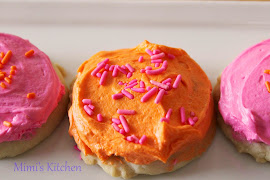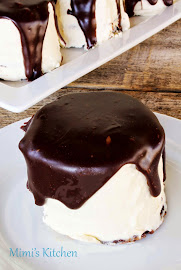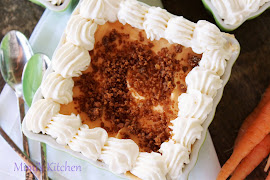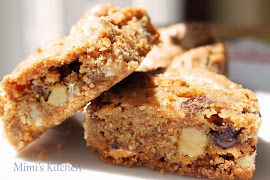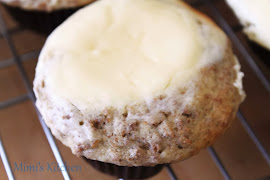 The peaches, plums, and nectarines of summer are almost gone, but the pears, apples and figs of fall are already showing up in stores and farm stands in our area. My neighbor Mrs. M found this Martha Stewart recipe for Pear upside-down cake, and knowing how much we like pear desserts, she passed this along to me.
The peaches, plums, and nectarines of summer are almost gone, but the pears, apples and figs of fall are already showing up in stores and farm stands in our area. My neighbor Mrs. M found this Martha Stewart recipe for Pear upside-down cake, and knowing how much we like pear desserts, she passed this along to me.
The cake is soft and moist with a fine texture, that is not to dense or to airy, but just perfect for soaking up all the caramelized sugars and juices from the pears when the cake is flipped over. This cake is simple to make and has very few ingredients, so the pear flavor really shines. To top it all off, we added a drizzle of butterscotch sauce, which complemented the warm sweet flavors of the fruit and brown sugar, but this cake is equally delicious all on its own. As the days start to get shorter and cooler, we will be making plenty more pear desserts, and I know this one will be making several more appearances.
Pear Upside -Down Cake
adapted from Martha Stewart
Topping
- 4 tablespoons unsalted butter
- 1/2 cup packed light-brown sugar
- 3 ripe pears, such as Bartlett or Anjou, peeled and cored
Cake Batter:
- 1 1/2 cups all-purpose flour
- 2 teaspoons baking powder
- 1/4 teaspoon salt
- 8 tablespoons (1 stick) unsalted butter
- 1 cup granulated sugar
- 1 teaspoon pure vanilla extract
- 2 large eggs, separated
- 1/2 cup whole milk
- 1/4 teaspoon cream of tartar
1. Make the topping: Melt butter in the bottom of a 10 1/2-inch cast-iron skillet over low heat. Add brown sugar, stirring until dissolved. Swirl to coat the bottom; remove from heat, and cool. Cut pears into 1/4-inch-thick wedges, and arrange them in a circular pattern over the brown-sugar mixture to cover completely; set aside.
2. Make the batter: Preheat the oven to 350 degrees. In a medium bowl, whisk together flour, baking powder, and salt; set aside.
3. In the bowl of an electric mixer fitted with the paddle attachment, cream butter and sugar on medium speed until light and fluffy, about 2 minutes. Add vanilla extract; beat to combine. Add egg yolks, one at a time, beating to combine
4. Alternating with the milk, gradually add the flour mixture to the butter mixture, and mix, on low speed, just until the flour is incorporated.
5. In a large bowl, beat reserved egg whites and the cream of tartar with a hand mixer until stiff but not dry. Using a rubber spatula, fold egg whites into the batter. Transfer to skillet. Using an offset spatula, spread the batter evenly, being careful not to disturb the pears.
6. Bake until well browned on top and a cake tester inserted into the center comes out clean, about 45 minutes. Run a knife around inside of pan, and immediately invert the cake onto a serving dish. Serve warm or at room temperature.
printable recipe
printable recipe

Foodie Friday








































